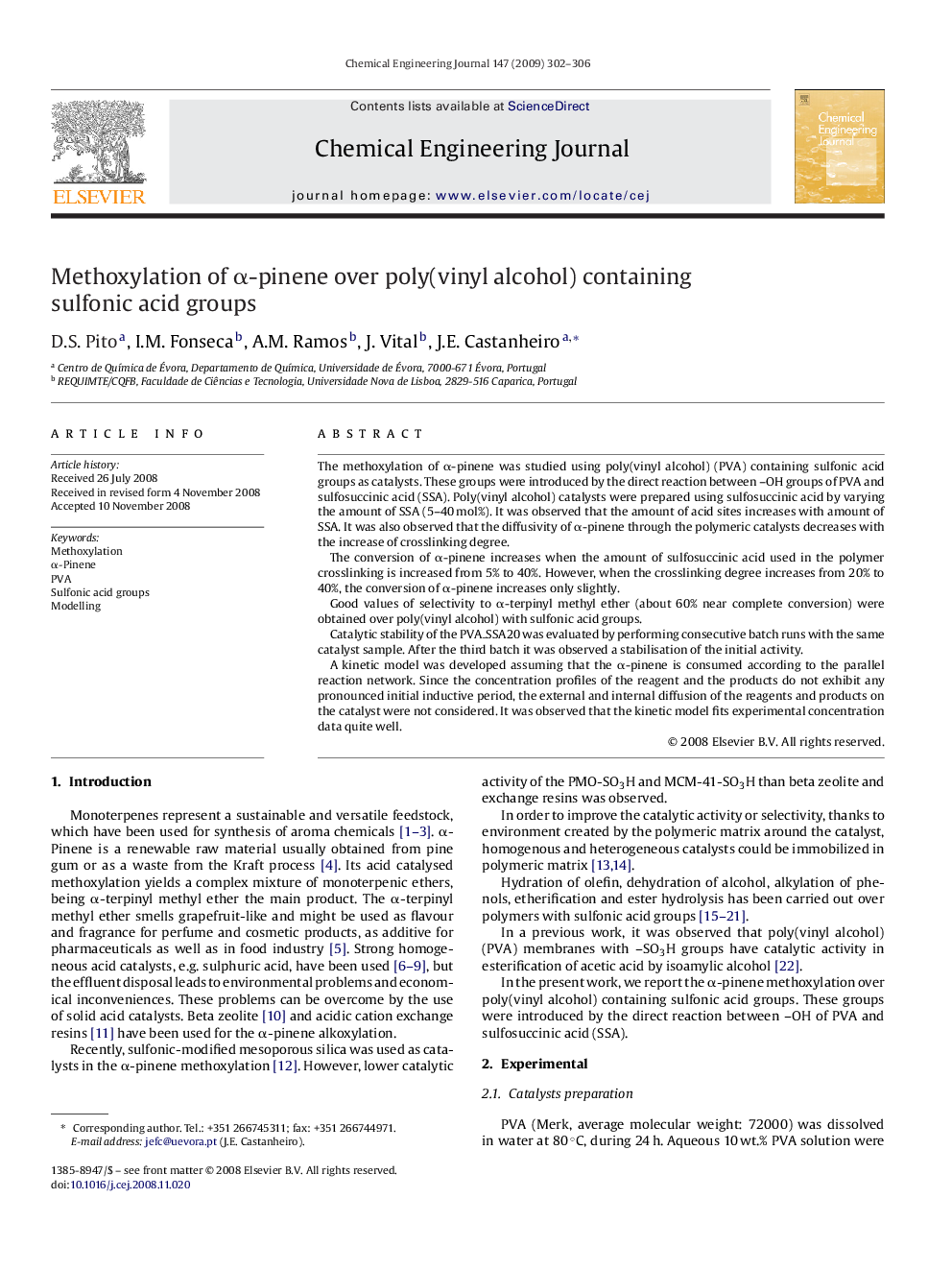| Article ID | Journal | Published Year | Pages | File Type |
|---|---|---|---|---|
| 152559 | Chemical Engineering Journal | 2009 | 5 Pages |
The methoxylation of α-pinene was studied using poly(vinyl alcohol) (PVA) containing sulfonic acid groups as catalysts. These groups were introduced by the direct reaction between –OH groups of PVA and sulfosuccinic acid (SSA). Poly(vinyl alcohol) catalysts were prepared using sulfosuccinic acid by varying the amount of SSA (5–40 mol%). It was observed that the amount of acid sites increases with amount of SSA. It was also observed that the diffusivity of α-pinene through the polymeric catalysts decreases with the increase of crosslinking degree.The conversion of α-pinene increases when the amount of sulfosuccinic acid used in the polymer crosslinking is increased from 5% to 40%. However, when the crosslinking degree increases from 20% to 40%, the conversion of α-pinene increases only slightly.Good values of selectivity to α-terpinyl methyl ether (about 60% near complete conversion) were obtained over poly(vinyl alcohol) with sulfonic acid groups.Catalytic stability of the PVA_SSA20 was evaluated by performing consecutive batch runs with the same catalyst sample. After the third batch it was observed a stabilisation of the initial activity.A kinetic model was developed assuming that the α-pinene is consumed according to the parallel reaction network. Since the concentration profiles of the reagent and the products do not exhibit any pronounced initial inductive period, the external and internal diffusion of the reagents and products on the catalyst were not considered. It was observed that the kinetic model fits experimental concentration data quite well.
